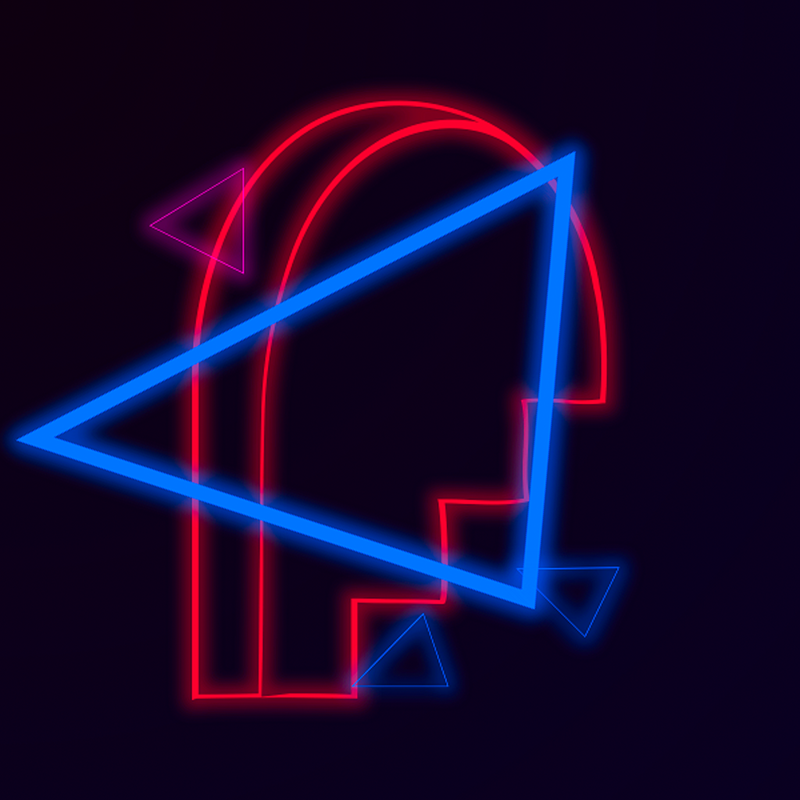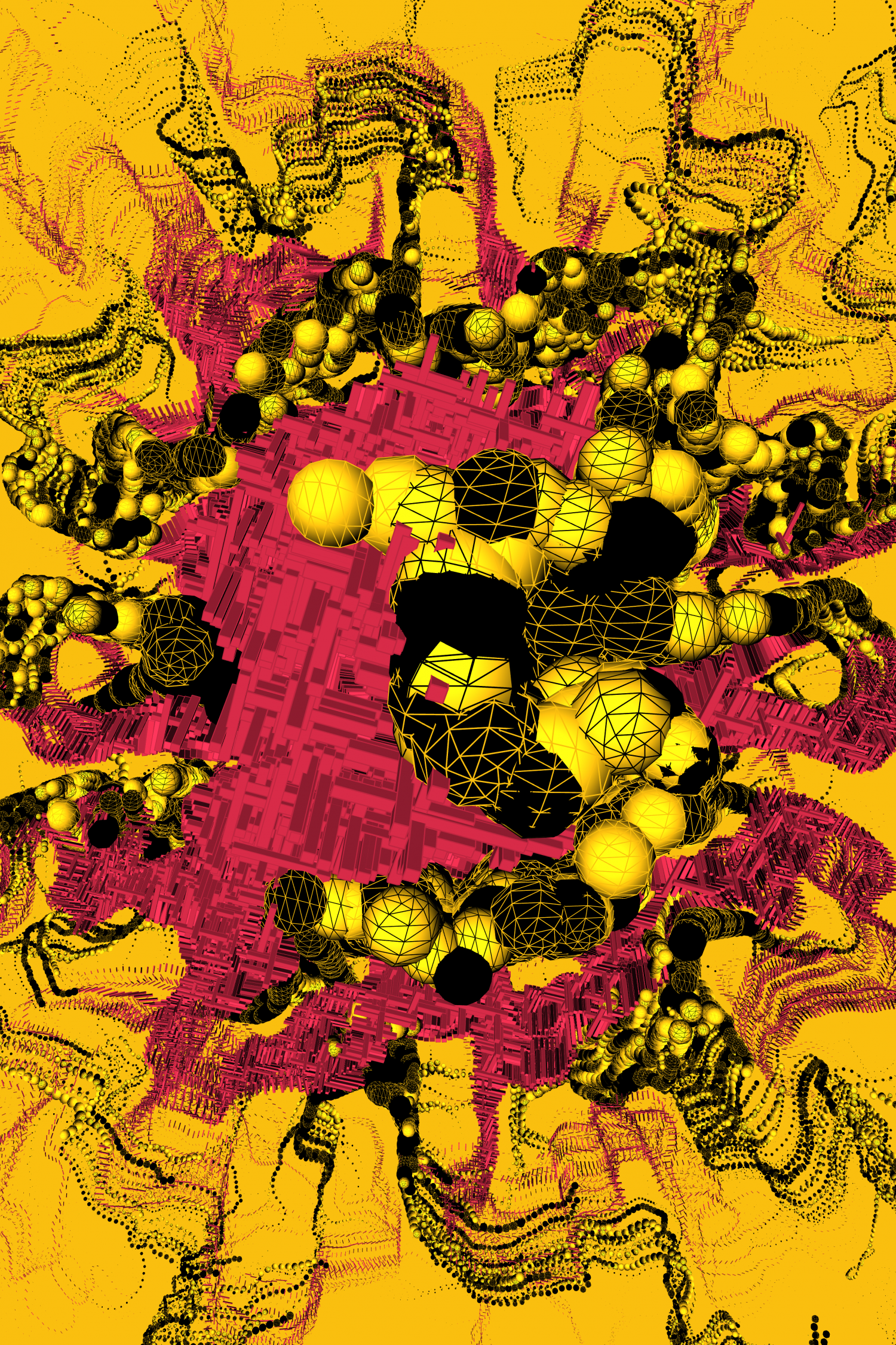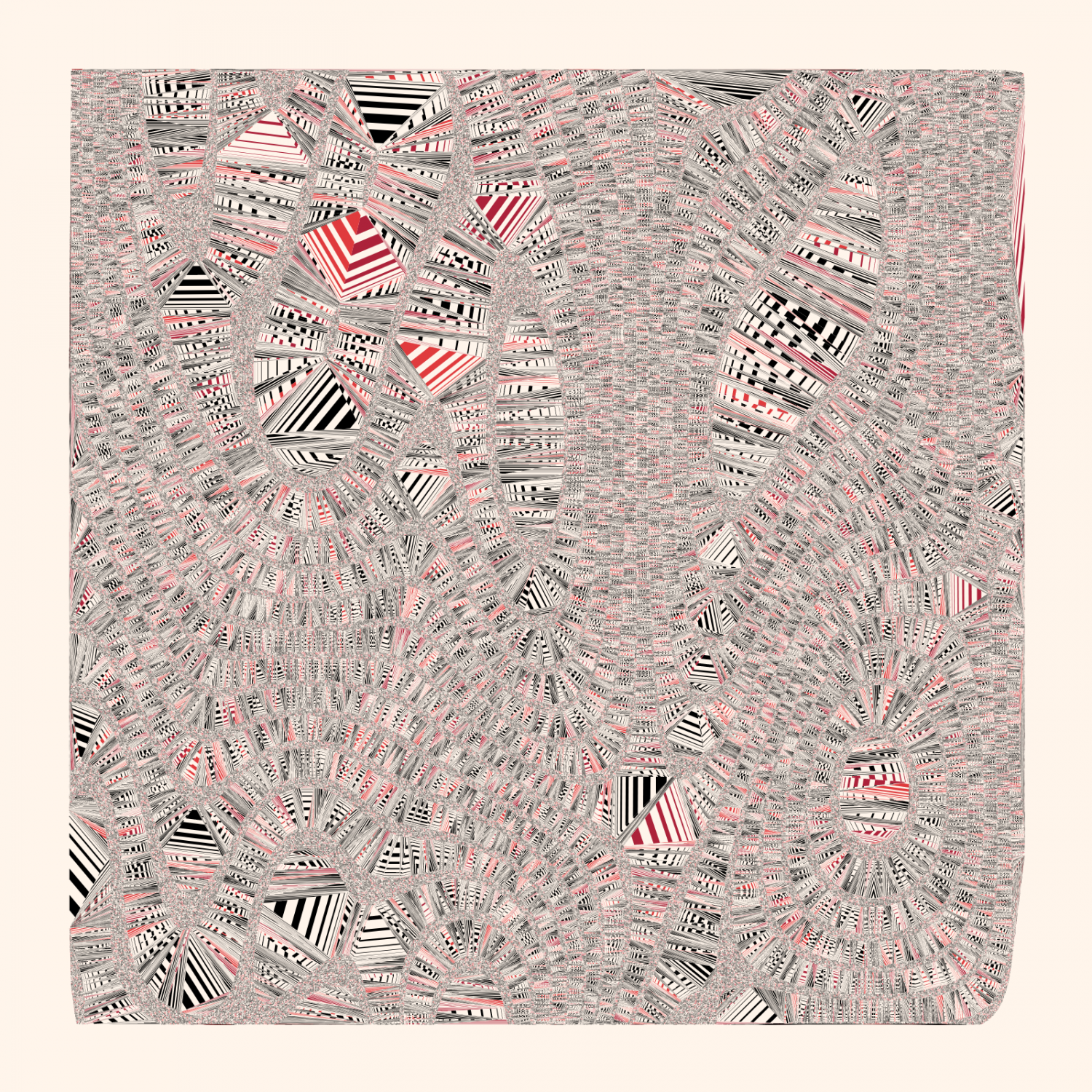TGAM Interviews
As part of our third exhibition "Issue #03 Red Pill" Ryan Bell joins TGAM founders Xavier and Ruggero, for a casual conversation about his practice and generative art.

Ryan is an active member of the Tezos generative artwork community, selected to host multiple live generative NFT minting galleries at Art Basel across Switzerland and Hong Kong. In a demonstration of versatility and experimentation, his work in Hong Kong, "Microgravity" was fully abstract, using hyper complex fractal mathematics, while his "Dreamcatchers Forest" exhibit in Switzerland produced an illustrative nature scene flowing with leaves and flowers.
Ryan Bell is a software engineer, visual artist, and musician living in Las Vegas, NV. His visual artwork explores themes of radical complexity, recursion, and playfulness. He describes his process as inventing new software tools to solve interesting technical challenges which yield colorful, sophisticated visual forms.
We suggest you listen to this playlist created by Ryan Bell while reading this interview. These are tunes that inspire Ryan's work.
The Generative Art Museum: Hello Ryan, an absolute pleasure to have you here. So... Where did it all begin for you? When did you find generative art and what got you into creating with this medium.
Ryan Bell:
I've always been a programming addict ever since I was a young kid, age 7 or 8, trying to reverse engineer different games I‘d come across or different visual systems I’d see. It really started to click when I saw Wolfram's \"A new kind of science\", the emphasis on these unpredictable programs that would create endless streams, entropy and patterns that were kind of organic but on their own like a whole new type of science.
That’s what really got the wheels spinning on things you could create that maybe others had not tried before. They were incredibly simple but would have these beautiful outputs. So I went in deep just writing all kinds of random cellular automata that would do different rule sets and then at some point I had the opportunity to do a summer school program with Wolfram himself.
That was kind of cool, actually getting in on the deeper mathematics, the systems and where he started. I've always been into fractals and mandelbrots and it follows the same principles of these really simple programs that are just a couple of lines maybe like two equations and just infinite depth behind them, it's something you can't really do with physical mediums. When you paint something you have a single instance of it but when you can break it down into code you can just add infinite exploration within the domain.
So that’s maybe the origin and then from there just continuing to try to find new patterns, new ideas, new creative ways to mix different things that I’m interested in.
“I've always been a programming addict ever since I was a young kid, trying to reverse engineer games.”
TGAM: What inspires your art, is there anything in particular, or are there any artists you are particularly fond of?
RB: There’s definitely a feedback because now I'm collecting so I’m very much on the ground seeing what everybody else is doing, which makes me say oh wow that was a cool idea, I want to do that, so it's a lot of just taking it all in and then just trying to do new things, I always like a good challenge.
TGAM: Give us a bit of tech talk for those who are interested, what’s the process behind your work, your tools etc.
RB:
I have maybe 2 or 3 little starters I've put together that I tend to re-use but on the foundation it's just javascript. I work as a software engineer, I’m a front end engineering lead and we use typescript so I'm very familiar with typescript and java script so that's really where it all starts.
From there it's just about bringing in different tools. Recently I brought in a color library that was really interesting which does perceptually uniform colors, so instead of doing p5 where you have rgb color space or hue, saturation, brightness instead you can get into more obscure color spaces which I actually used on microgravity.
With these you can get a near perfect visual separation of brightness from chroma, so yeah just different tools that you can bring in and just explore different techniques & different patterns.
TGAM: We've noticed on your twitter feed a few pieces of audio equipment, a UAD apollo 6… is this something else you do, any plans for music releases in the future, or is there any out there?
RB:
Yeah so in college I studied music composition, I've always been a musician playing guitar, bass, keyboards, I actually put out a couple of albums on spotify. After studying music composition I got in with a production company. We did a ton of music for radio and television so I have a background of being absorbed with music. Now it's a case of trying to figure out how I might bring that back around into the generative space.
I’m playing with a couple of ideas but I haven't quite figured out how I'm going to put it all together. It's interesting if you try to do it all just in the browser, you hit some pretty good limitations on just how much audio you can synthesize. In chrome, it's tricky doing the audio stuff, if you're calculating it by hand in code... you need 44,100 amplitude point calculations (x 2 stereo channels) for every 1 second of audio. Then if you want like 2 oscillators per voice... and like 5 instruments, it explodes and the browser crashes. So now I'm just trying to figure out if maybe I can still do something that combines generative audio using samplers.
I’m working on writing a probabilistic sampler or sequencer and then recording my own analog synth patches and then putting that together with some kind of visual system but it’s all a big work in progress.
“My art is a lot of just taking it all in and then just trying to do new things, I always like a good challenge.”
TGAM: Your collaboration with Killed by a pixel for Antiflow, another great success! How was it working with Frank, do you have any more collabs in the pipeline?
RB:
It was a very cool collaboration, Frank Force is awesome! Because at work I work with a bunch of developers together and sometimes we pair programs so it's very normal day to day to be writing code with other people. It's always a fun thing but I've never done it with art so having that opportunity was really kind of unique and pretty cool.
I love frank, he's pretty opinionated on how to write some common things you do, like should we use a switch here or do a couple of conditionals and he’d very much be like “no we’ll do it this way and I'm working on a book that will explain why” so that was cool to have someone with a different take on things and to push and pull on different ideas.
I would do a pull request for some random color modifications and he'd do a pull request for some analysis and by the end we had something pretty unique that combined both our styles.
TGAM: Any more collabs planned, is there a dream collab?
RB: Tough question, tough question, nothing is planned, but it’s wide open so there are a lot of artists I'd love to work with, it would be hard to name names, lets just say any of the fx hash favorites!
TGAM: Why tezos, any plans to release on other chains?
RB: I'm very happy on tezos. It’s funny how its starts, so years back when NFTs were much younger I was just exploring the protocols and the different specifications, in fact I’m actually a co contributor on a 721 implementation in viper, I go way back into 721’s. But then I just started trying different things.
TGAM: As a collector you are quite active, your collection has some great pieces, what is it you look for when collecting? Anything specific that draws your eye to a piece of work, composition, color palette, or something unknown?
RB: You kind of bring it back to Tezos, I’m really collecting just for the fun, for the art, I'm not really collecting to speculate on prices. Whereas on Ethereum everything feels a lot more speculative and more like investments, although art blocks is on it’s own but still there's so many pfps that dominate Ethereum but you don't have that scene on tezos so for me it's really about just having fun. I’m taking a lot of the proceeds from my own sales and just rerouting them into other cool things I see.
“I’m really collecting in Tezos just for the fun, whereas on Ethereum everything feels a lot more speculative and more like investments.”
TGAM: How do you manage the want to explore as an artist, but at the same time still being easily identified as Ryan. Or do you not care about being identifiable, how do you manage this concept?
RB:
Yeah, that's a good question. I definitely appreciate when you're collecting an artist and they have like their own vibe and all their works are just different flavors of that one core idea.
Personally, I don't have that, I very much like exploring different things and then just hopefully since it's all coming from me there's some kind of origin there that you can tell that maybe I've worked on it. But other than that, I just really like trying different things.
TGAM: That's awesome, I would say that probably your first big hit was fragments of a wave. Something that really put you on the map. Did you expect that?
RB:
It was totally new for me, so there were a couple of things that I was playing with. I was just starting out in triangulation and then different ways to organize those points. So I figured out how to get a cool banding within these triangles and then I kept making them smaller and smaller until finally I had this flow and it looked really kind of unique and cool and I I just felt like all right if I stop here I'm happy with it.
Often if I keep going past that point I'll just end up making it worse or I'll be adding unnecessary variations to it. So it reached that point where I was like all right, this is it let's just release it. It was around midnight or 2 am so I just uploaded the project and went to sleep and then the next day I got up and was alright, I need to mint some of these myself and they were all sold out! At the time I wasn't selling out that quickly so I ended up having to buy a bunch on secondary for myself.
TGAM: Did you ever see yourself as an artist, or do you prefer to be called a creator, or do you think this is something different altogether in this scene?
RB:
Yeah, definitely. I mean, we're definitely all artists, but then it becomes something else when you have to also verbally describe your visual art to a machine so that it can create the visuals for me.
With a paint brush or a pencil I'm terrible, I'm just not that gifted in physical form, but then once it becomes digital and I can take my time and get the precise curve styled in, then I can finally express visual ideas. Whatever you would call that, but yeah, I think we are all both content creators & artists now the fact we have to do social, and software engineering and all that stuff.













